Touch screen technology has become universal in our daily lives, from smartphones and tablets to ATMs and self-service kiosks. Understanding how touch screens work and the various technologies behind them. It is essential to appreciate their functionality and applications fully. In this detailed exploration, we will explore into the details of touch screen technology. We will focus primarily on capacitive touch screens, while also briefly discussing other types of touch screen technologies.
Introduction to Touch Screen Technology:

Touch screen technology revolutionized human-computer interaction by enabling intuitive and direct manipulation of digital content through touch gestures. At its core, a touch screen is a display overlay those senses and responds to touch inputs, allowing users to interact with electronic devices without the need for external peripherals like keyboards or mice.
Types of Touch Screen Technologies:
There are several types of touch screen technologies, each with its own set of principles and mechanisms. The most common types include:
Capacitive Touch Screens
Resistive Touch Screens
Infrared Touch Screens
Surface Acoustic Wave (SAW) Touch Screens
Optical Imaging Touch Screens
Each technology is different in its operation, but capacitive touch screens are the most popular. They are widely used, particularly in smartphones and tablets.
Capacitive Touch Screen Technology:

Capacitive touch screens operation is based on the principles of capacitance, which is the ability of an object to store an electrical charge. Here’s a detailed breakdown of how capacitive touch screens work:
Transparent Conductive Coating: The surface of a capacitive touch screen is coated with a transparent conductive material, typically indium tin oxide (ITO). This coating forms a grid of electrodes across the screen.
Electrostatic Field: An electrical current is applied to the grid of electrodes, creating an electrostatic field across the surface of the screen. Each electrode carries a small electric charge.
Touch Detection: When a conductive object, such as a finger or a stylus, comes into contact with the screen, it disrupts the electrostatic field at that point. This disruption alters the capacitance of the electrodes in the vicinity of the touch.
Coordinate Calculation: The touch screen controller, which is connected to the electrodes, detects the change in capacitance caused by the touch input. By analyzing the pattern of capacitance changes across the grid, the controller determines the precise location of the touch.
Input Processing: The touch screen controller relays the coordinates of the touch to the device’s processor, which then interprets the input and initiates the corresponding actions, such as opening an application, scrolling, or typing.
Advantages of Capacitive Touch Screens:
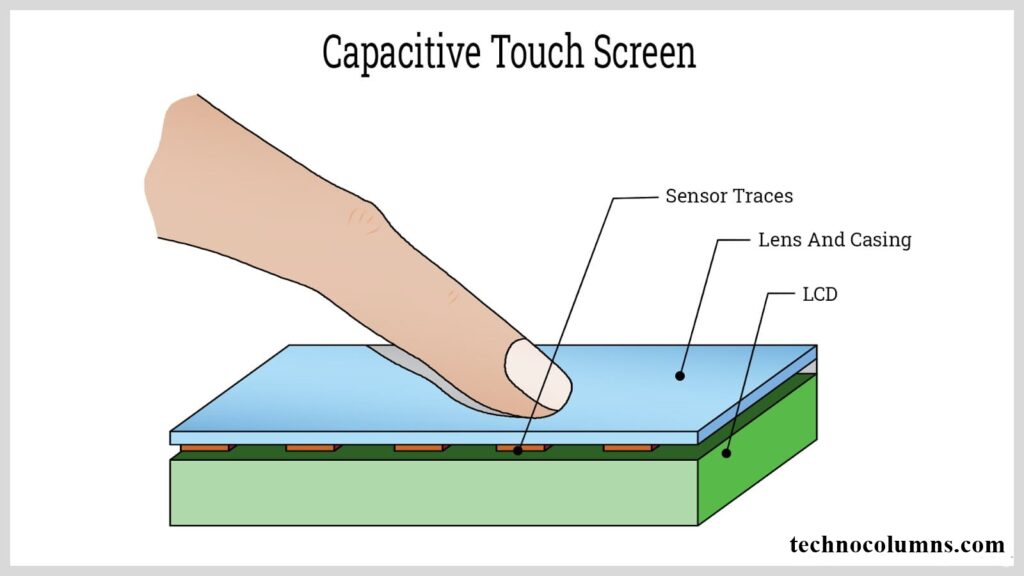
Capacitive touch screens offer several advantages over other types of touch screen technologies:
High Accuracy: Capacitive touch screens provide precise and accurate touch detection. It makes them suitable for tasks that require fine control, such as drawing or gaming.
Multi-Touch Support: Capacitive touch screens can detect multiple touch points simultaneously, allowing for advanced multi-touch gestures like pinch-to-zoom and rotation.
Durability: Since capacitive touch screens rely on electrical properties rather than physical pressure for input detection, they are more durable and resistant to wear and tear.
Transparency: The transparent conductive coating used in capacitive touch screens allows for excellent optical clarity. It ensures minimal interference with the display’s visibility.
Other Types of Touch Screen Technologies:
While capacitive touch screens dominate the consumer electronics market, other touch screen technologies serve specific use cases and applications:
Resistive Touch Screens:
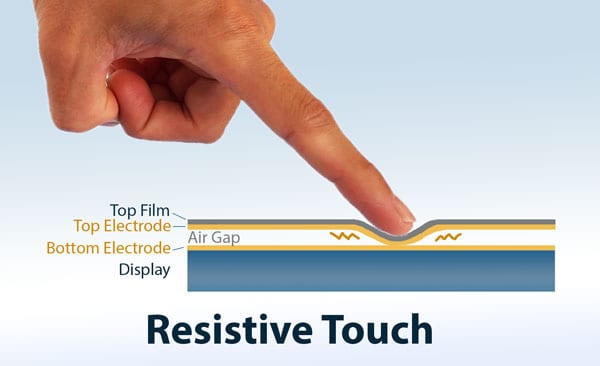
Resistive touch screens consist of multiple layers, typically two flexible sheets coated with a resistive material and separated by a small gap. When pressure is applied to the screen, the top layer makes contact with the bottom layer, completing a circuit and registering the touch.
Infrared Touch Screens:

Infrared touch screens use an array of infrared LEDs and photodetectors mounted around the edges of the screen. When a touch occurs, it interrupts the infrared light beams, allowing the system to determine the touch location based on the interruption pattern.
Surface Acoustic Wave (SAW) Touch Screens:
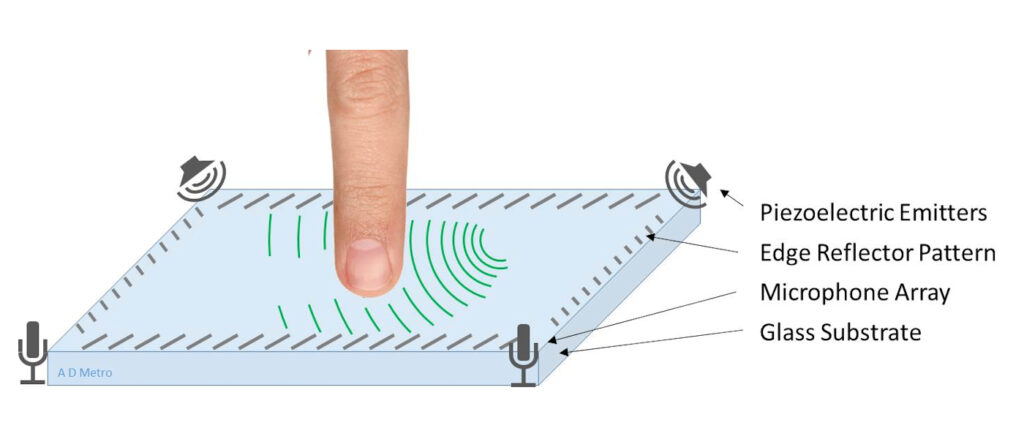
SAW touch screens employ transducers mounted along the edges of the screen to generate surface acoustic waves. When the screen is touched, the waves are absorbed, and the touch location is determined based on the difference in wave propagation time.
Optical Imaging Touch Screens:
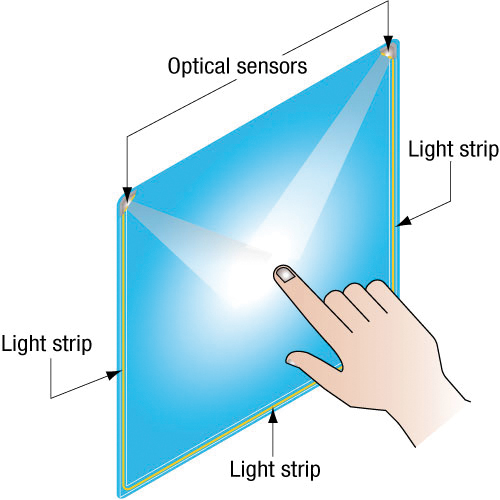
Optical imaging touch screens use cameras or infrared sensors to detect touch interactions. These systems analyze changes in light or infrared patterns caused by touch inputs to determine the touch location.
These technologies offer unique advantages in terms of cost, durability, or environmental robustness. They are less common in consumer devices compared to capacitive touch screens.
Applications of Touch Screen Technology:
Touch screen technology finds applications across various industries and sectors, including:
Consumer Electronics:

Smartphones, tablets, laptops, and wearable devices utilize touch screens for spontaneous user interaction and navigation.
Information Kiosks:

Touch screen booths provide self-service access to information and services in public spaces such as airports, malls, and museums.
Point-of-Sale Systems:
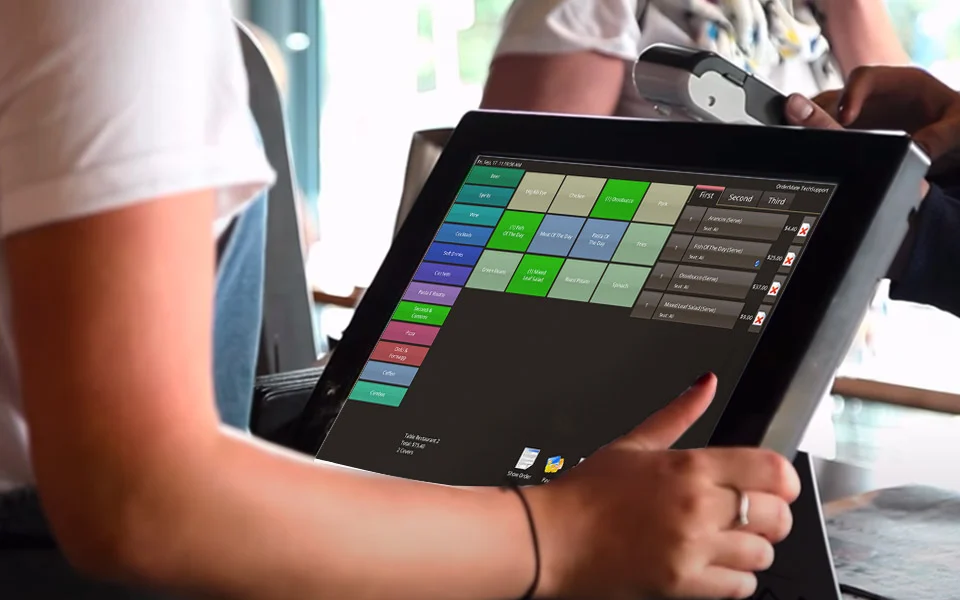
Touch screen terminals are widely used in retail environments for processing transactions and managing inventory.
Industrial Control Panels:
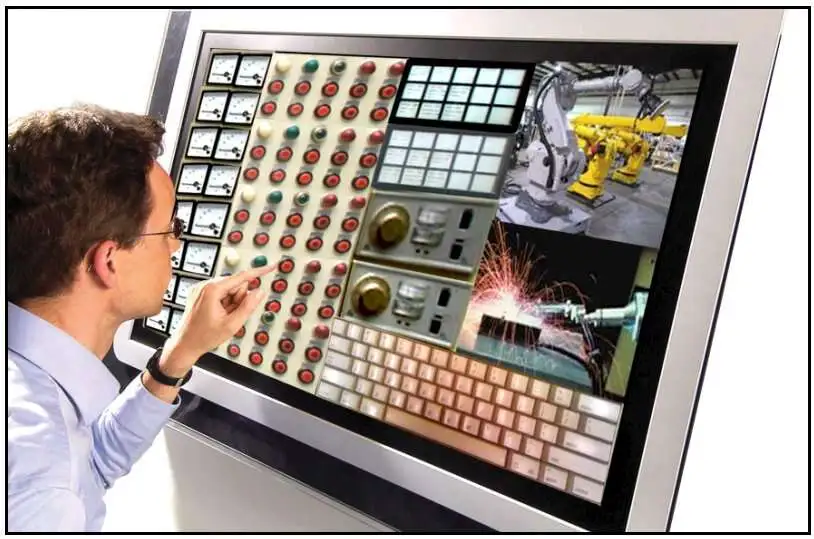
Touch screens are employed in industrial settings for controlling and monitoring machinery and equipment.
Automotive Infotainment Systems:

Touch screen interfaces enhance the user experience in modern vehicles by providing access to entertainment, navigation, and vehicle settings.
Conclusion:
Touch screen technology has transformed the way we interact with digital devices, enabling spontaneous and continuous user experiences across a wide range of applications. Capacitive touch screens dominate the consumer electronics market. There are other touch screen technologies continue to serve specialized needs in various industries. Understanding the principles and mechanisms behind touch screen technology is essential for both consumers and professionals working in fields where touch screen interfaces play a crucial role. As technology continues to evolve, touch screens are likely to remain at the forefront of human-computer interaction. It drives innovation and enhancing user experiences in the digital age.

